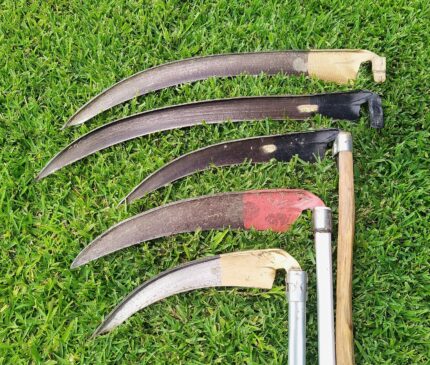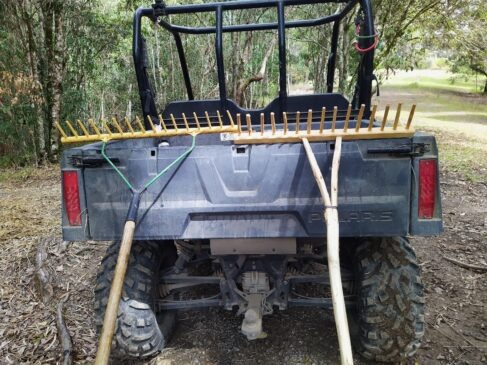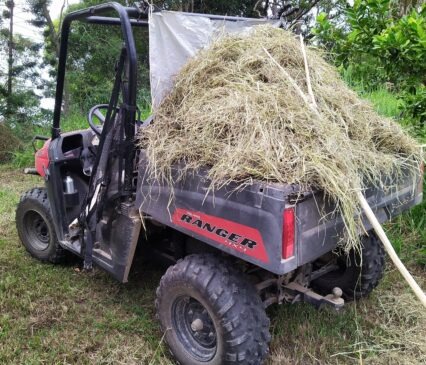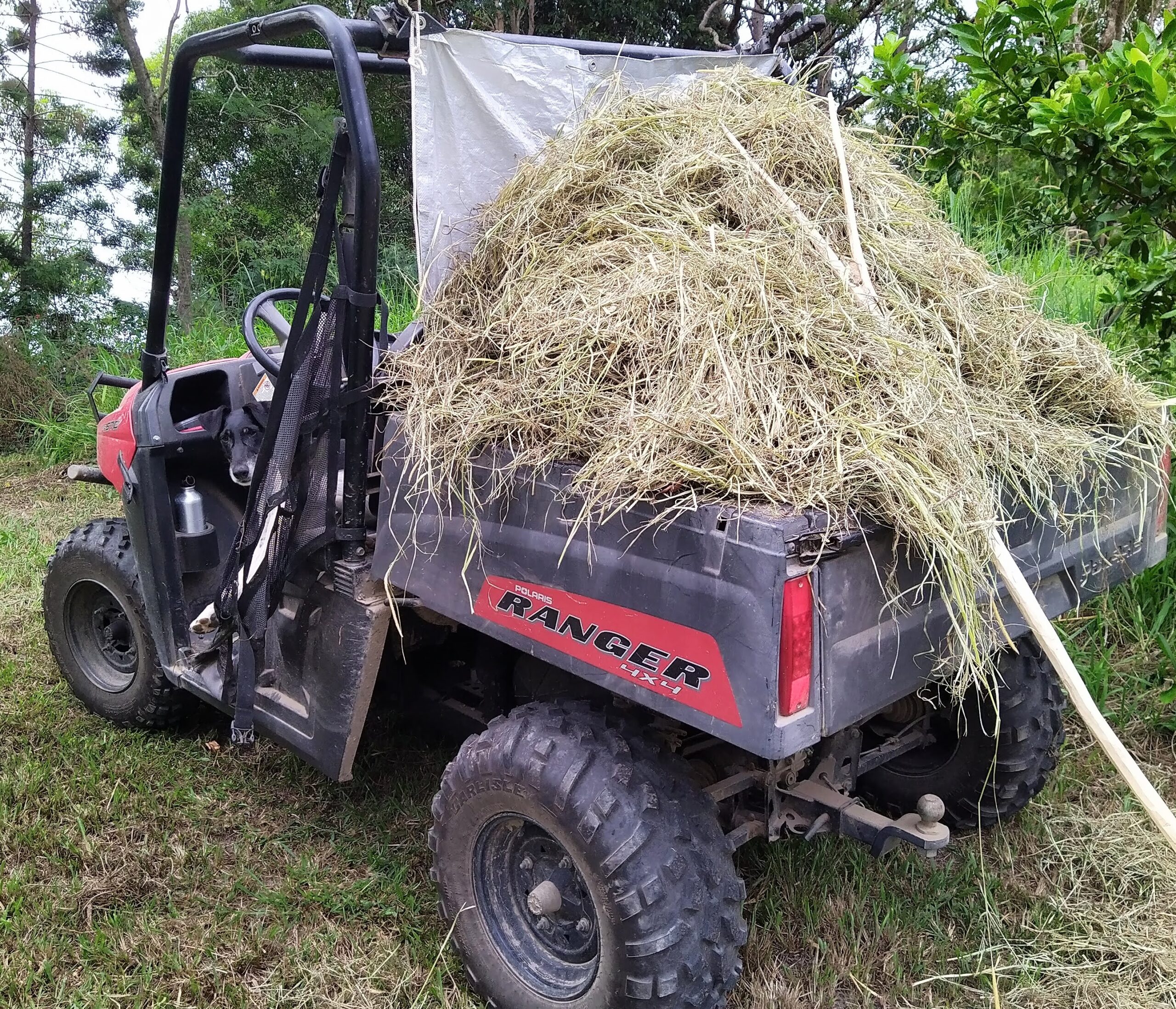Scything is one part of the process of hay making, and there are a few bits of scythe mowing equipment that take you from just cutting grass to making fine haystacks. A good selection of scythe blades and snaths, a hay rake, and a hay fork will be the core of a haying setup.
Scythe blades

You want to have a few blades to suit the tasks. For easy mowing of a prepared field, 75 cm blades are good. There are longer blades, but they suit perfect grass and flat ground. Where the vegetation is tough or the ground is uneven, 50 cm blades are good. For tight spaces like paths a 40 cm blade is more maneuverable.
Fortunately changing blades is simple and routine, so you can carry a few with you and change to suit, or have them ready to go on your range of snaths.
Snaths
There’s plenty of room for variation with snaths. The metal ones you buy are quite different according to brand, so if you can afford it, and be bothered, it pays to buy a couple and see how they work for you. Metal snaths are light, durable, and recommended for heavy mowing.
I make my own wooden snaths. It’s a rewarding project, one you can learn by just having a go, and if you have success you might start to collect some of the tools to make it streamlined. The beauty of making snaths is that you can customise them for purpose and your mowing style. Things like placement and shape of handles, and the angle the blade sits, are up to you.
Hay rake

A good hay rake makes a big difference. My first forays into haymaking were a lot of discouraging hard work, partly due to the rakes I was using. My proper bought hay rake has a nylon head with sturdy 10 cm tines, on a 1.6 metre light wooden handle. I also have one I made from wood, which was a very satisfying project and it functions nicely. By comparison, grass rakes are too light and flexible, light landscaping rakes (nail teeth) dig in too much, and landscaping rakes are just too heavy. I also tried a ‘hay rake’ with long curved metal tines, but it doesn’t grab the hay.
Hay fork

After raking, you need a good hay fork to move your hay. Fortunately they are easy to make. There are nice tutorial videos available, so you can choose your style. A single (V-shaped) fork works very well for me. We are lucky to have camphor laurel as a weed tree here, which is easy to work green and dries to a light and strong pole.
A hay fork must be light and long. I have steel compost forks that are way to short and heavy for haying. The idea is to stand and pitch, rather than carry hay around, and you want to be able to pitch your hay across 4 m or so. You can move big volumes of hay with surprising accuracy.
Tarp
The last little thing is a tarp for moving hay around. I use a cheap, small, 1.8 x 1.2 metre tarp, with a loop of rope through the corner eyes at one end. It’s perfect for loading small stacks of hay to drag them to a central point, your transport or a main haystack. Larger tarps might lure you in with the promise of moving more hay, but the drag force of moving them seems to increase exponentially. For loading to our Utility Task Vehicle, the tarp doubles as a barrier between the tray and cab, stopping hay spilling forward onto the seat and down onto the motor where it can smoulder.
Scything for hay is a fairly economical activity. The equipment needed can seem like a substantial investment, but the investment is worth it and makes the job a pleasure.

